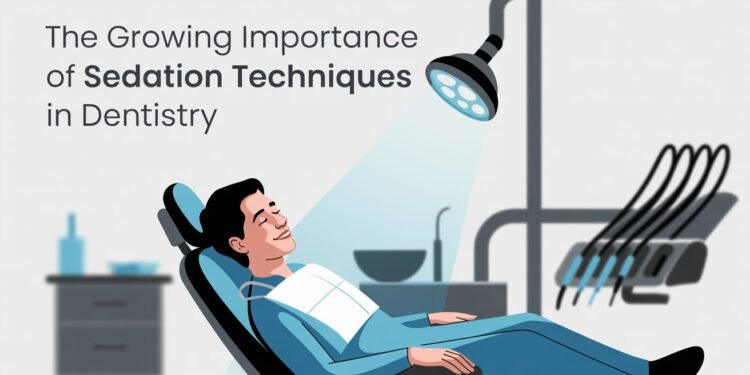Last Updated on August 28, 2025 by admin
In recent years, the field of dentistry has witnessed significant advancements, particularly in the area of patient comfort and anxiety management. Sedation techniques in dentistry have become increasingly important, revolutionizing the way dental care is delivered and perceived by patients. This transformation is not only enhancing the patient experience but also broadening the scope of procedures that can be comfortably performed in a dental setting.
Understanding Sedation Dentistry
Sedation dentistry involves the use of medication to help patients relax during dental procedures. It is sometimes referred to as “sleep dentistry,” although this is not entirely accurate since most patients remain awake, albeit in a deeply relaxed state. Various levels of sedation can be employed, ranging from minimal sedation, where patients are relaxed but fully awake, to general anesthesia, which renders patients completely unconscious.
Types of Sedation Used in Dentistry
- Minimal Sedation: Usually administered via inhalation (nitrous oxide, also known as “laughing gas”) or orally through a pill. Patients remain awake but calm.
- Moderate Sedation: Also known as conscious sedation, this level is often achieved through a higher dose of oral sedatives or intravenous (IV) sedation. Patients may slur their words and may not remember much of the procedure.
- Deep Sedation: Patients are on the edge of consciousness but can still be awakened. This is typically administered intravenously.
- General Anesthesia: Patients are completely unconscious and unaware during the procedure. This is used for more complex and invasive dental treatments.
The Role of Sedation in Enhancing Patient Experience
One of the primary benefits of sedation dentistry is its ability to alleviate the anxiety and fear associated with dental visits, which are common barriers preventing people from seeking necessary dental care. By ensuring a stress-free and pain-free experience, sedation techniques encourage patients to undergo regular check-ups and treatments, contributing to better oral health outcomes.
Sedation also plays a crucial role in managing pain and discomfort during procedures, allowing dentists to perform complex and lengthy treatments in a single visit. This not only improves the efficiency of dental care but also reduces the number of appointments patients need to attend, saving time and minimizing disruption to their schedules.
Expanding the Scope of Dental Procedures
As sedation techniques become more refined, they are enabling dentists to offer a broader range of services. For instance, cosmetic procedures, which require meticulous attention to detail and can be time-consuming, are now more accessible to patients who might otherwise be deterred by anxiety or discomfort. Practices such as Cosmetic Dentist Texas can now provide advanced aesthetic treatments with greater ease and patient satisfaction.
Training and Safety Considerations
While sedation dentistry offers numerous benefits, it is imperative that dental professionals undergo rigorous training to administer sedation safely. Proper monitoring of the patient’s vital signs during procedures is crucial to prevent any potential complications. Dentists must also be prepared to manage any adverse reactions and have protocols in place to ensure patient safety at all times.
The Future of Sedation Dentistry
The growing popularity of sedation techniques is paving the way for a more patient-centered approach in dental care. As technology and methods continue to evolve, the future holds promise for even more sophisticated sedation options that will further enhance patient comfort and procedural outcomes. This evolution will likely lead to an increase in patient compliance and a general improvement in public oral health.
In conclusion, the integration of sedation techniques into dental practice represents a significant advancement in the field, transforming patient experiences and expanding the capabilities of dental professionals. As more patients become aware of the benefits of sedation dentistry, it is poised to become an integral component of modern dental care.









